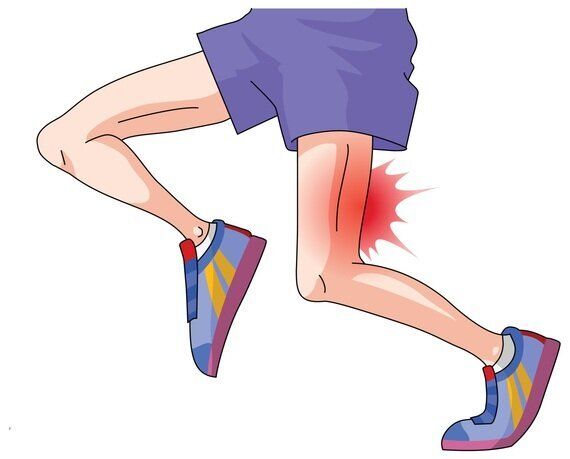
Every single runner will experience the three aches and pains mentioned below. We tend to just accept them as part and parcel of the exercise regime. But we don't need to! There are plenty of techniques to both help prevent them in the first place and ease them after. Here are our secrets to pain free exercise:
1.Delayed Onset Muscle Soreness a.k.a everything hurts after yesterday's run
Delayed Onset Muscle Soreness or DOMS is something that everyone will encounter when they start running (or doing any kind of exercise programme). It's the fancy name for the familiar soreness and aches you will feel in certain muscles the day after you've done something strenuous.
It's not serious and it's pretty difficult to avoid when you first start exercising, but that doesn't mean you shouldn't pay attention to it. The pain is caused by injury to your muscle; as it repairs itself so it strengthens the muscle in question which, along with other things, is how we get fitter.
If we don't give our muscles a chance to repair, however, then we aren't strengthening anything, but we are more likely to get overuse injuries. So you shouldn't ignore the aching, but it shouldn't put you off running completely.
How to prevent it:
Make sure you warm up and cool down properly. If you are just beginning to exercise or you are upping the intensity of your exercise regime make sure you do it gradually. Don't put yourself out of action at the first hurdle.
How to deal with it:
-Drink lots of water: your body is working hard to repair your muscles, help it out with other body functioning.
-Try a hot bath or shower and a massage: increasing blood flow to the muscles will help your body to make repairs quicker.
2.Shin Splints
Shin splints are a general term for the common experience of pain at the front of your leg during or after running.
They're caused by overuse, running with poor technique, running on a very hard surface or wearing the wrong shoes. In essence, shin splints are injuries to the large muscles in your leg.
How to prevent it:
In order to prevent shin splints you need to understand what is causing them, and that could mean a bit of trial and error assessing your running technique or trying different shoes. If you regularly suffer from shin splints after running then it's worth going to a running clinic or physiotherapist so they can assess your running gait. That'll clear up straightaway whether your running style is to blame - you'll also be given advice on how to remedy this.
If you know you've been overdoing it, then simply resting and remembering to gradually increase exercise in the future should be enough.
How to deal with it:
-Ice: straight after, ice the leg to reduce inflammation.
-Rest: it's a must if it's an overuse injury. You can continue to do non-weight bearing exercise like cycling or swimming in the interim (it might even get you into competing in a triathlon).
-Foam roller exercises: Rolling your shin over a foam roller can help loosen the muscles and work the connective tissue. It can hurt at first but stick at it and you'll find your pain is relieved.
3.Plantar Fasciitis (a kind of foot pain):
If you've ever had a shooting pain in your heel then you might be suffering from plantar fasciitis. The injury often occurs very gradually as repeated strain causes tiny tears in the tissue and sometimes a runner won't take proper notice of the problem until it is excruciatingly painful. At risk are those who exercise on especially hard surfaces, people with flat feet, high arches, or tight tendons in the back of their heel.
How to prevent it:
-Shoes: shoes with sufficient cushioning will help to prevent this.
-Stretches: stretch out your Achilles tendon and the bottom of your feet. Try rolling the arch of your foot over a tennis ball repeatedly whilst pushing down on it as hard as you can. This will keep the connective tissue soft and stretched.
How to deal with it:
Unfortunately plantar fasciitis will require significant rest; anywhere between 6 weeks and 3 months. During this time you really need to limit the amount of running you do or manage the issue extremely well.
A combination of rest, stretching, icing after exercise and anti-inflammatories should steer you in the right direction. If you are new to running you might have to stop entirely for a while. It's best to consult with a G.P. or physiotherapist if you are experiencing foot or heel pain.